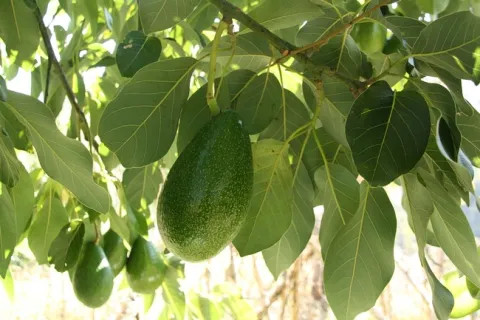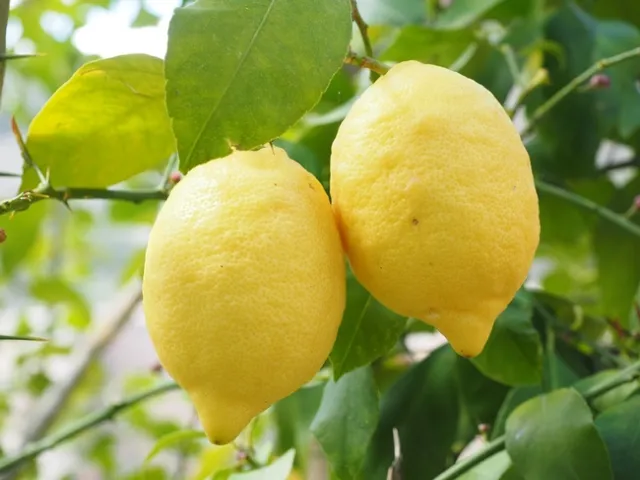We recently wrote the blog post “Wait! Don't Prune Apricot and Cherry Trees Just Yet,” to caution gardeners against pruning these trees in winter. Now we'd like to discuss when and how to prune avocado and citrus trees.

Avocados
Most avocado trees need little or no pruning. Whenever possible, allow them to develop naturally. Avocado leaves produce and store food for the tree. If this food supply is reduced by pruning, fruit production will also be reduced. Usually, removing dead or weak branches is the only pruning you need to do. Avoid pruning in late summer and early fall, as this stimulates new shoot growth that is susceptible to frost injury. In general, remove as few green branches and leaves as possible.
If you need to remove lower branches, prune them out completely, or cut them back to an upright growing shoot. Prune only after your tree has developed enough upper foliage to prevent sunburn damage on the lower limbs or trunk.
Sometimes a young tree grows tall without branching, grows sideways, or grows a top that is unbalanced. Correct these conditions by cutting the unruly limb or trunk back to a strong lower branch, or by staking the tree. Keep in mind that avocado trees grow naturally in an irregular way and will develop a better structure if they are not pruned at all. If you want to control the height, it's best to do so while the tree is young.
To prevent tall, upright growth, pinch back the terminal bud of the upright shoots on the young tree. Repeat this after each growth flush during the first few years. Your tree will spread out to the sides and develop a more compact form. If you reduce the size of an older tree by heading back large branches in the top of the tree, be sure to thin out the new growth which follows. Otherwise, the tree will soon grow back to its original height.

Citrus
If necessary, light pruning can be done in citrus trees any time of year. However, the best time to prune citrus is in early spring, after danger of frost has passed and before the start of spring growth.
Nearly the same rules for avocado trees apply to pruning citrus trees. The foliage of a citrus tree is an important food (carbohydrate) storage area. Pruning removes foliage and stored foods and causes the tree to produce a flush of vegetative growth instead of fruit. For the most part, prune out only dead or broken limbs.
Citrus trees normally produce vigorous shoots from the base of the tree called suckers, which you should remove as they grow. Vigorous shoots that grow from branches are called watersprouts. Remove watersprouts if they are not well placed but leave them whenever possible. Young trees need no pruning for the first two or three years after planting, except to remove suckers. As the tree grows older, prune lightly only to remove branches which are too closely spaced or entangled. Do not remove low-hanging branches, as they bear fruit within easy reach and shade the trunk and soil. The ideal citrus tree has a skirt of foliage that extends almost to the ground. Left alone, citrus trees normally develop an even, round-headed shape as they mature.
Lemons usually need a bit more pruning than other types of citrus. Cut back some of the more vigorous shoots on young trees. Lightly thin the branches of mature lemon trees each year to improve the size and quality of the fruit.
Ed Perry is the emeritus Environmental Horticultural Advisor for University of California Cooperative Extension (UCCE) in Stanislaus County.

